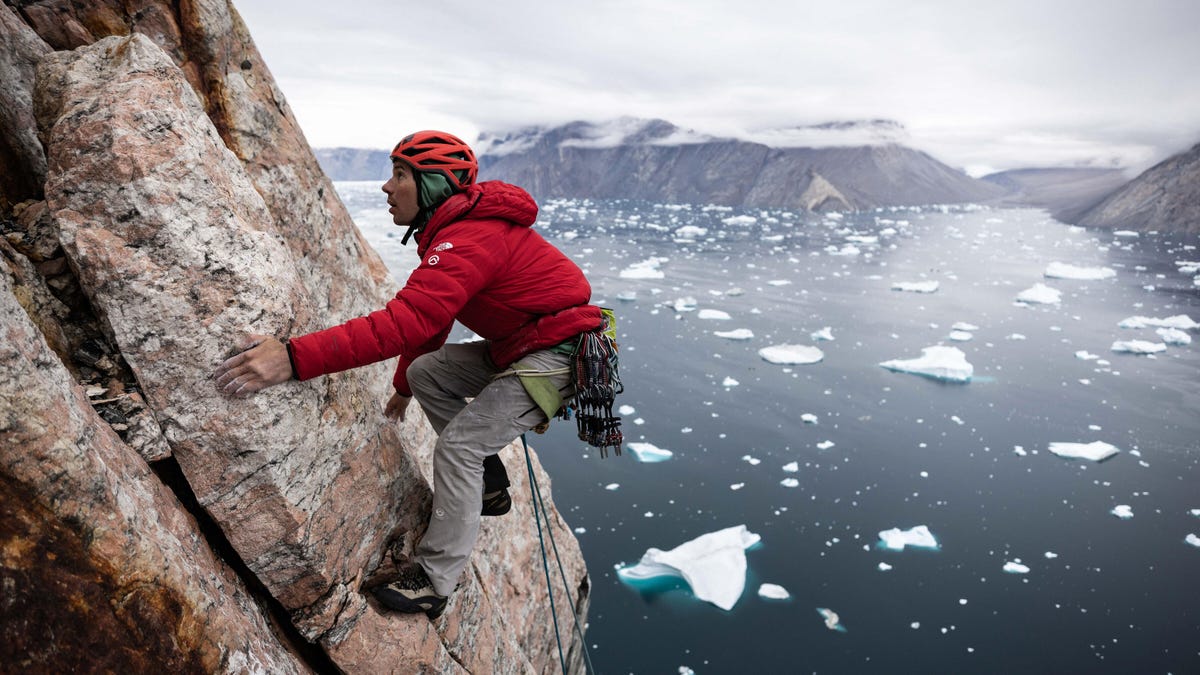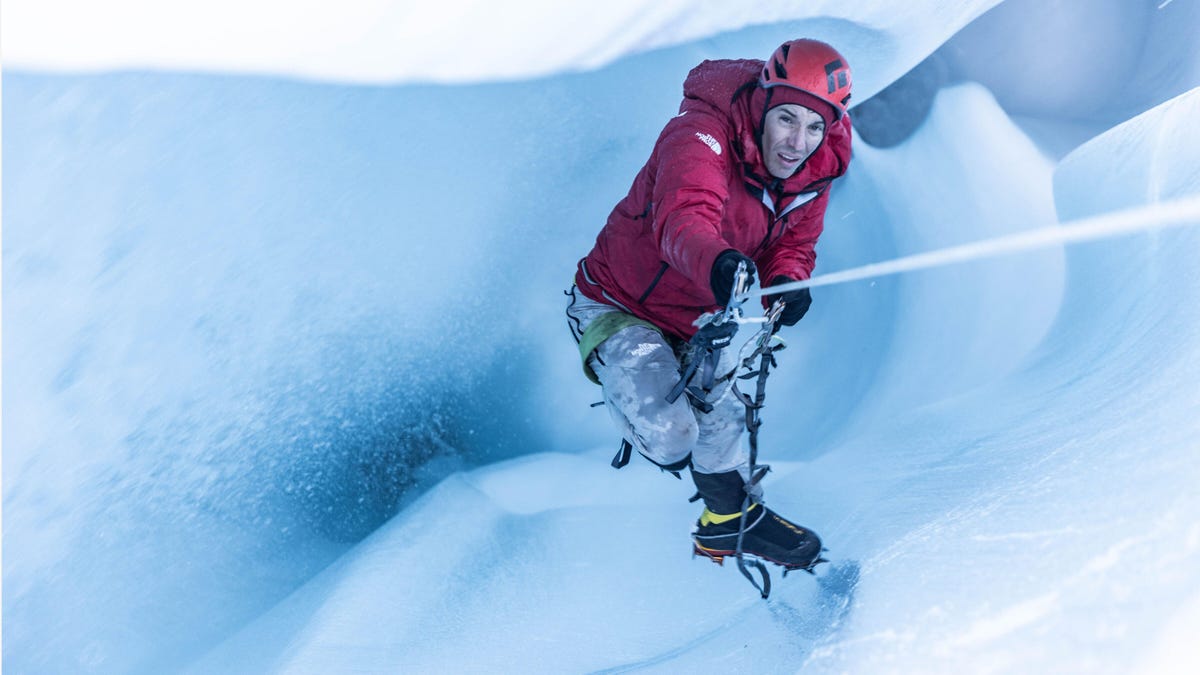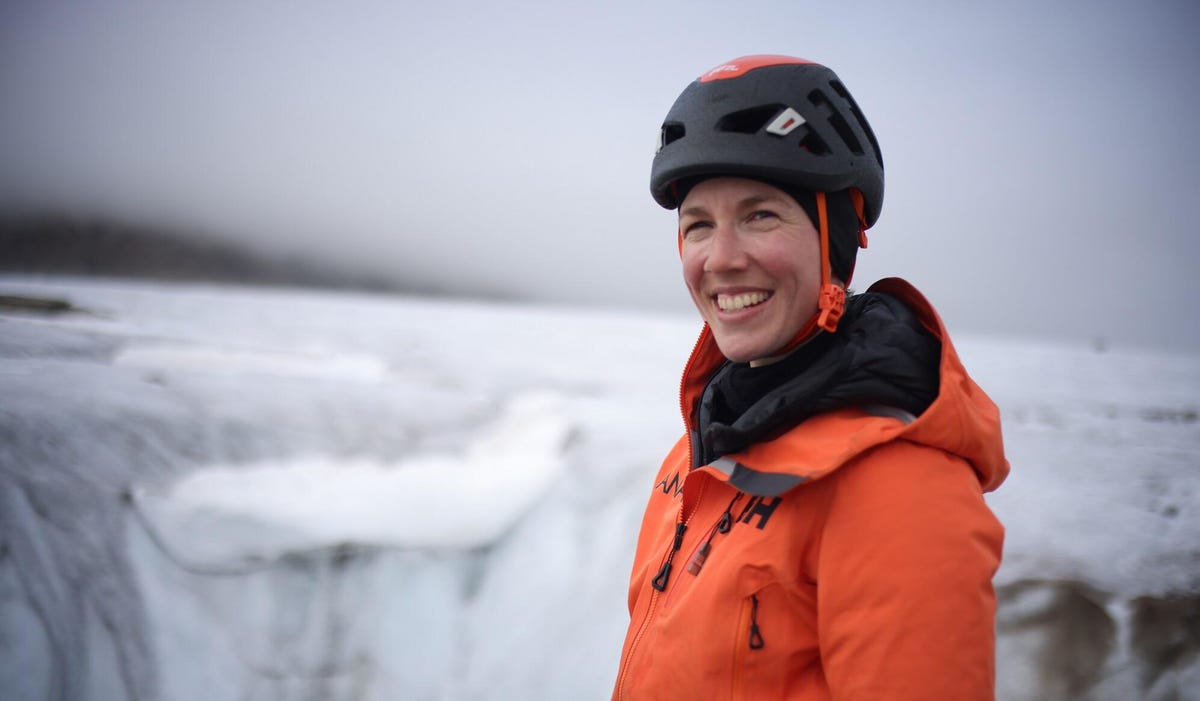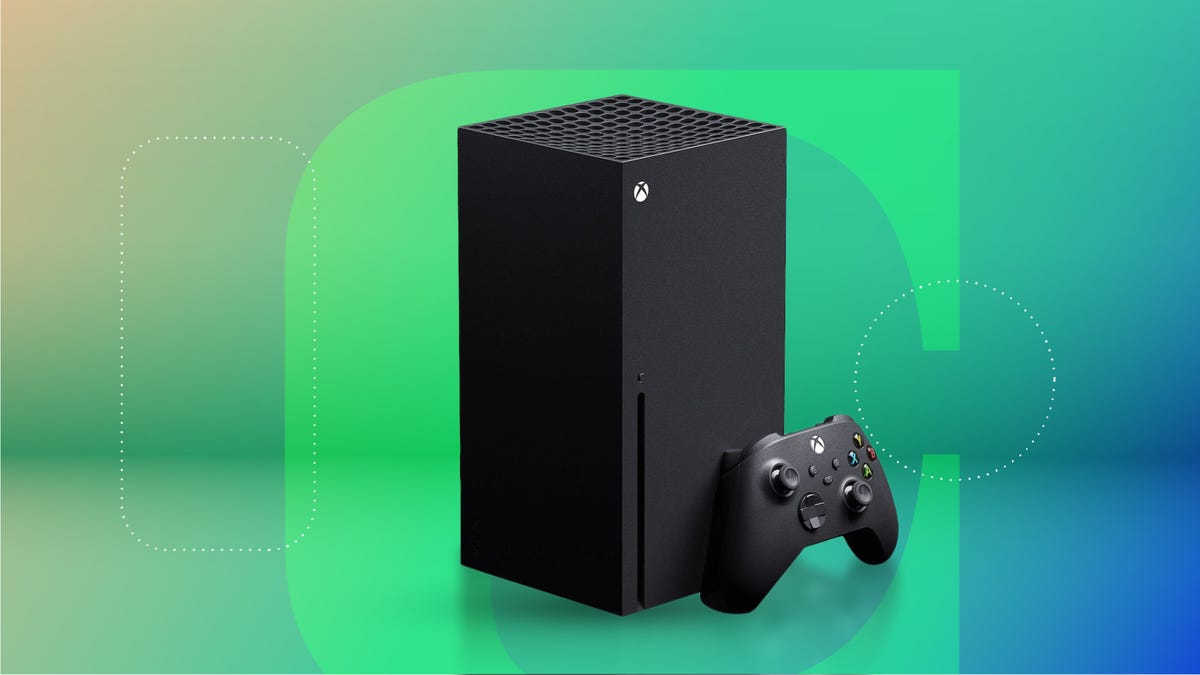Technologies
‘Free Solo’ Star Alex Honnold Climbs Unexplored Arctic Mountains to Track Climate Change
His new National Geographic miniseries, Arctic Ascent, follows Honnold and his team tracking ice formation in Greenland’s frigid fjords.

Alex Honnold ascended to fame making one of the most daring no-rope climbs of a rock face in history, as documented in the award-winning film Free Solo. Then he turned to climbing for causes — the latest of which took him to the Arctic Circle, where he traveled with a team to measure the impact of climate change on some of the most remote parts of planet Earth.
Honnold’s expedition to check on Greenland’s ice, performed in 2022, was documented for a National Geographic three-episode miniseries that will arrive on Disney Plus on Feb. 5, titled Arctic Ascent.
Much like Honnold’s prior journey to track down undiscovered frogs up the sides of yet-to-be-climbed jungle mesas in South America, his venture in Greenland’s frigid fjords is filled with firsts. He and the team ascended a rock wall that hadn’t previously been climbed to reach an iced-over plateau that nobody had crossed on foot before, made a boat trip across uncharted waters, and finally ascended Ingmikortilaq, a 3,750-foot previously unclimbed mountain that’s nearly a thousand feet taller than Yosemite’s El Capitan cliff face, which Honnold summited in Free Solo.
«When we were sailing up the fjord in boats to go up to Ingmikortilaq, we did actually literally cross a point where there was no more information on the depth chart,» Honnold said. «We crossed a line and it was just blank after that. Nowadays, it’s relatively rare to go somewhere where you’re kind of off the edge of the map.»
As remote as Honnold’s trek was, what they were investigating has implications for the whole world. Emissions from burning fossil fuels are causing our climate to change, warming up the planet and leading to more extreme weather. As scientists expand their study of climate change’s impact, they’re also looking farther afield to understand how it can upset natural processes — and in Greenland, the melting of vast ice sheets could lead to a rise in global water levels, which could put coastal settlements around the world underwater.
The expedition took the team nearly 100 miles through subzero temperatures and even colder winds, which is difficult enough to endure in the open ice plain but extra torturous when climbing. As Honnold pointed out, you can’t climb with gloves as your fingers need to be free to grip holes and cracks in the sheer rock wall, so they must be exposed to the elements. And unlike Honnold’s previous trips to Antarctica, which had been cold but largely sunny, Greenland’s rain and snow meant many grim overcast days for his adventuring team.
Instead of finding frogs, the pro-environmental angle for this trip was to forge a path across ice fields and up mountain faces for Heïdi Sevestre, a glaciologist with the Arctic Monitoring and Assessment Program, who came to measure how climate change is affecting the formations of ice layers in arctic Greenland. Over the course of the journey, Sevestre took readings and collected samples in areas humans have never walked or climbed — a rare opportunity to collect data that could better our understanding of our warming world.
To Honnold, that’s a worthy cause for adventure. His post-Free Solo fame led to work that he funneled into a new foundation that has hooked up disadvantaged communities to solar power around the world. The Arctic Ascent expedition fed the same urge for Honnold to tend to the planet.
«I think a project like this is just a way to help talk about the environment to a mainstream audience, in talking about the importance of climate change, basically,» Honnold said.
Sevestre and Honnold make up a third of the six-person crew that went on the expedition, which also included Hazel Findlay and Mikey Schafer, two other climbers well-known for their skill in so-called «first ascents» up rock faces; as well as safety specialist adventurer Aldo Kane and Greenland guide Adam Kjeldsen. The challenging conditions and pioneering opportunities in adventure and science attracted them all to help crucial research at the edge of the world.

Forging through the arctic with research tech and iPhones
The three-episode miniseries documents the team’s arduous journey, which is peppered with interludes wherein Sevestre deploys scientific equipment to measure conditions and estimate their normalcy — or how much climate change has made them abnormal.
But the climbers sometimes need to court danger to get those instruments into the right position. One incident early in the series’ first episode has Honnold and others rappelling down a gaping hole carved by water rushing down to a glacier’s base, and dropping a piezometer into the flood to measure how much is flowing. Another data point to bring back to the scientific community from places it’s never accessed before.
Sevestre took a range of measurements over the course of the trip, including rock samples from the initial rock wall that could provide historical data to compare to modern climate progression. She took sonar measurements of the plateau to estimate how much water might flow into the world’s oceans if the ice sheets melt. And when they got past the ice field to the lake, she dropped a knee-high cylinder into the water — an actual aquatic probe for NASA (one of many in its Oceans Melting Greenland, or OMG, network of probes).
Honnold brought his iPhone.
While most of the miniseries is shot by National Geographic videographers with conventional cameras and drones for jaw-dropping ultrawide shots of gorgeous landscapes and sheer rock walls, it can be tough to get filmmakers into position in more extreme moments. So Honnold recorded a small portion of the footage himself in the fleeting triumph when he and his fellow climbers reached the top of an arctic wall that had never been climbed before. And he did it with an off-the-shelf iPhone.
«You’re almost required to do little video diaries [with phones] all the time because you just can’t capture it otherwise, those kinds of interactions where it’s just you and your partner at the anchor being like, ‘Here we are, we’re doing a thing, isn’t this exciting?'» said Honnold. He used either an iPhone 12 Mini or iPhone 13 Mini, he recalled.
Viewers won’t notice when the show seamlessly switches to his iPhone point-of-view, which is stunning proof that the smartphones in our pockets can produce documentary-quality footage, even at the edge of the world. Honnold kept the phone in an inner jacket pocket close to his warm chest for the most part so it wouldn’t die when exposed to Greenland’s subzero temperatures, but it still let him take part in contributing his own moments, from jokey chitchats with his team to euphoric cheers atop mountains, to the documentary.
Honnold has carried smartphones on climbs before, which he used to listen to music and take photos to send to family and friends. But phones have come a long way, and production companies now outfit him with the latest phones. His next trip, another National Geographic-recorded expedition to Alaska, has him using an iPhone 14 Pro Max so he can use its ProRes high-quality video format.
«The quality of phones now is good enough that you can put on a big screen,» Honnold said.

An expedition of science and adventure, the National Geographic way
The actual Arctic Ascent expedition happened in 2022, and Sevestre bundled her research into the trip to execute experiments for multiple universities. These myriad readings and measurements are, as Honnold described them, pieces of data that institutions around the world will use for different projects.
«Nothing we did is groundbreaking in and of itself, but that’s kind of the nature of science is that no individual piece of data determines any outcome. It’s always just part of this broader web of human knowledge,» Honnold said. «We’re hoping to fill in a gap in the map, for sure.»
That said, expeditions can be productive long after they’ve finished. The science expert from Honnold’s previous trip up the South American jungle mesas is still publishing research on the frogs discovered during the expedition, which occurred years ago. We won’t know the full impact of the Arctic Ascent expedition for some time, but there are other benefits to documenting such a tough adventure in some of the most wildly beautiful and unexplored parts of the world.
«I think showing the landscape is important, just showing people the wild beauty of Eastern Greenland. And I think that people can be inspired by nature in that way,» Honnold said. «But I think it’s nice to have an educational component, to have [Sevestre] along, to help people understand what’s at stake in Eastern Greenland.»
Technologies
We’ve Found the Coolest, Most Futuristic Tech at CES 2026. And the Show Just Started
We’ve already had a day to trawl for our favorite cutting-edge technology. Neat stuff abounds!

We have people all over the show floor and beyond at CES, searching for the most interesting, innovative and cutting-edge tech available. A ton of useful new information is also available, which you can find on our CES 2026 live blog and in our CES hub.
The show floor opened Tuesday, and we had a lot of preview time beforehand to gawk at some CES staples, such as robots, electronic toys, phones and more. I’ll be back here to top off our fun finds regularly throughout the show.
Technologies
Grab This Tariff-Busting Xbox Series X Deal and Save $44 While You Can
You can bag a 1TB Xbox Series X for just $606, but act fast, since we don’t know how long this deal will last.

Ever since tariffs and other economic uncertainty led to Xbox price increases in late 2025, things have gotten expensive. A 1TB Xbox Series X now sells for $50 more than it used to, and there is little sign of these prices improving anytime soon.
Thankfully, every so often, a deal pops up that helps make things a little more affordable like this Walmart discount that slashes that same Series X to just $606. The catch? Well, there isn’t one. But we don’t expect this deal to last for long, so make sure to get your order in soon before it leaves for good.
The Xbox Series X has been around for a while now, so there are no surprises with what you get in the box. The Series X comes with a 1TB SSD for storage, and you get a controller in the box. This version also has a disc drive for installing games and watching Blu-ray movies, too.
Hey, did you know? CNET Deals texts are free, easy and save you money.
You can look forward to watching 4K content and playing 4K games, as well as enjoying audio options such as Dolby Digital, Dolby TrueHD and DTS. All of that makes this a capable machine, whether you want to watch content or play games.
CHEAP GAMING LAPTOP DEALS OF THE WEEK
Why this deal matters
It’s unlikely that Xbox prices will get any cheaper anytime soon, so deals like this are the best we can expect for a while now. If you’re in the market for an Xbox and have the $604 to spare, then this is probably the time to place your order before it’s too late.
Technologies
Dreaming of a Cable-Free World? I Think I Just Saw the Future of Wireless Power
This is the coolest thing I’ve seen at CES 2026. And it has nothing to do with AI.

Many technology companies arrive at CES 2026 in Las Vegas, the world’s biggest tech show. They often make bold claims about the life-changing potential of their innovations, but it’s rare to see anything that actually lives up to the hype.
When you do see something truly special, on the other hand, it can seem like magic. That’s exactly how I felt when I experienced the wireless charging demo from Finnish company Willo, a deep-tech startup that’s just emerged from stealth mode.
«Seeing is believing,» Willo co-founder and President Marko Voutilainen tells me as I take a seat in a Las Vegas hotel suite to witness what the company hopes will be a revolution in wireless power. It could render the charging cables that rule our lives and clog up our drawers obsolete for good.
Wireless power has long posed a conundrum to tech companies. There needs to be perfect alignment between a device and the charger, which means that it’s often just as convenient to simply plug a cable into your phone. Wireless charging today feels like a half-baked solution.
The tech that Willo showed me doesn’t rely on charging pads, line of sight, directional targeting or even immediate proximity. Instead, it allows devices to be charged simply by existing within the force field of the power source.
The demo I’m being shown looks unassuming. They tell me I shouldn’t get caught up too much with the form factor of the power source — a simple gray-white cube. This isn’t a consumer device that’s for sale, merely a means to demonstrate the technology to me.
Willo CEO Hari Santamala picks up several receivers, black boxes shaped like phones with LEDs on the top. As he moves them to within 15 inches or so of the power source, the LEDs light up. He moves them around the cube, rotating them in different directions. The LEDs remain lit.
I’m seeing. I’m believing.
Making power cables the floppy disks of tomorrow
Unfortunately, I’m not allowed to take any pictures or videos. This week at CES, Willo is emerging from stealth mode to show the world what it can do, but it’s still playing its cards close to its chest.
The core technology is based on more than a decade of research by the company co-founder and CTO Nam Ha-Van. The company is claiming a number of world firsts with its wireless power tech, including the ability to rotate devices at any angle while charging, along with the ability to charge multiple devices at once.
Santamala talks me through his vision for how it would exist in the home. «You have to build the transmitter in a way that it’s kind of a natural part of your environment,» he says. «Ideally, we don’t see any of this,» he adds, gesturing to the cube.
You could sit on the sofa with your phone in your pocket, and it would be quietly charging while you watch TV. If you were working from home, you could move freely around your house with your laptop, never having to worry about plugging it in.
«We want to do to power cables, what floppy disks are to us today,» Voutilainen says. «They’re remnants of the past.»
It feels like the thing we’ve been waiting for — the way wireless charging was always supposed to be. So when can we expect to get it?
Willo is here at CES meeting journalists like me, but also the kind of partners it will need to adopt this technology and take it out into the world. Voutilainen and Santamala are cagey about their ideal strategy for doing this, but it feels like they’re hinting towards something open and large-scale. Comparisons to Wi-Fi and Bluetooth are thrown around.
«This can really change our everyday lives if introduced correctly in a very kind of open and driving-the-market-forward kind of way,» Santamala says. The company’s tech is «pretty ready» for industrialization, he adds — it just depends on their partners’ use cases and timelines.
I depart from the demo suite, hoping that what I’ve seen is as viable as I’ve been led to believe. Willo clearly thinks it has something special on its hands, and if the rest of the tech industry agrees, this might just be the first step toward a future free of charging cable fuss and inconvenience.
-

 Technologies3 года ago
Technologies3 года agoTech Companies Need to Be Held Accountable for Security, Experts Say
-

 Technologies3 года ago
Technologies3 года agoBest Handheld Game Console in 2023
-

 Technologies3 года ago
Technologies3 года agoTighten Up Your VR Game With the Best Head Straps for Quest 2
-

 Technologies4 года ago
Technologies4 года agoBlack Friday 2021: The best deals on TVs, headphones, kitchenware, and more
-

 Technologies4 года ago
Technologies4 года agoGoogle to require vaccinations as Silicon Valley rethinks return-to-office policies
-

 Technologies4 года ago
Technologies4 года agoVerum, Wickr and Threema: next generation secured messengers
-

 Technologies4 года ago
Technologies4 года agoOlivia Harlan Dekker for Verum Messenger
-

 Technologies4 года ago
Technologies4 года agoiPhone 13 event: How to watch Apple’s big announcement tomorrow
